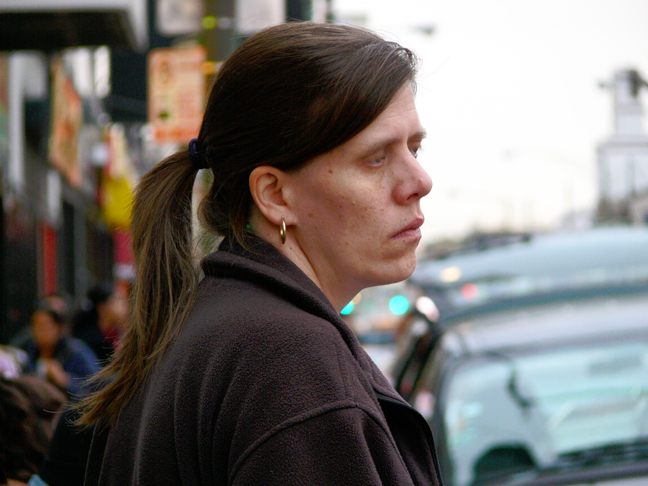
The language of photography, as in painting and sculpture, is a visual one. How that language actually works is not particularly clear, even to those who demonstrate considerable proficiency using it. Images titillate the senses. They model or mimic aspects of first hand real visual experience. They recall memories, evoke emotional responses, reinforce or call into question particular assumptions, provoke thought, stimulate imaginings, forge meaningful new connections. And that list is probably not exhaustive. Very likely, the visual system within the brain is extremely good at mapping things. When a new map resonates with previously stored visual maps, i.e. memories, recognition occurs. Looking at a photograph involves exploring both resonances and dissonances that are set up within the brain of the viewer by the photograph. The title of this image came about because when I sympathetically tried to contort my own facial expression into something resembling the depicted woman's expression, the effort recalled for me feelings of deep weariness. I want to believe my interpretation of the woman's expression because the resonance I find within my own brain seems so vivid. But is that a valid conclusion? Was the woman actually experiencing weariness at the moment the image was made? And will anyone besides me arrive at the same interpretation of her expression that I have? The probable, but not certain, answer to those questions is yes. Humans are largely wired the same. But, there are some physical differences due to genetic variation. Plus, there are developmental differences that can result in significantly varied physical sensitivities between individuals. Day to day life experience also builds widely varying knowledge sets within each of us. That's a huge amount of uncertainty added into the process. Still, we do tend to arrive at similar interpretations and understandings of things. Especially, if we compare notes, share and discuss our impressions with each other: "That's funny, I didn't get that impression at all. To me ... Still, now that you point that out, I do see what you mean." May your explorations into the language of visual experience cultivate an ever increasing capacity for empathy and understanding. |
• Posted: Oct 29, 2009 11:01:21
• Comments Welcome
• Vote CoolPhotoblogs
• Purchase a Print
• Share
Tuesday, October 20th, 2009 Chicago IL USA |